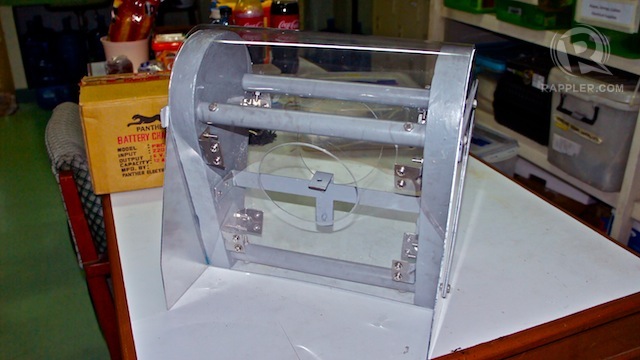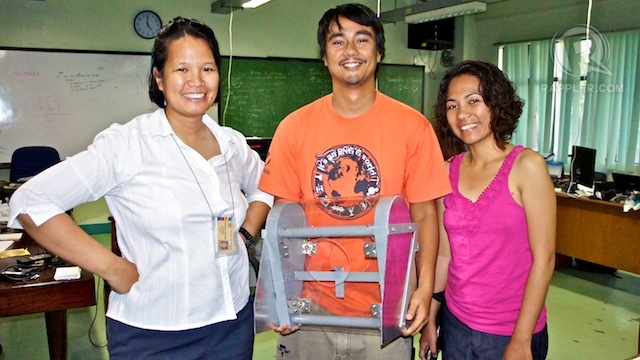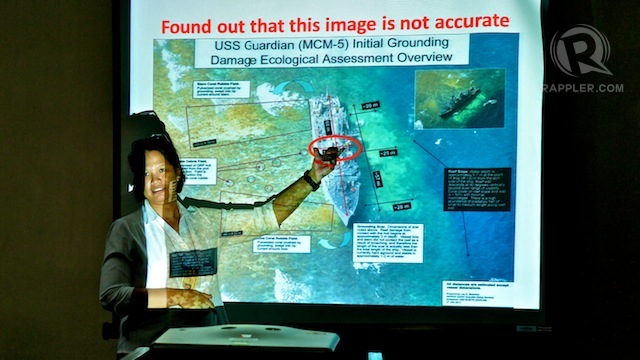SUMMARY
This is AI generated summarization, which may have errors. For context, always refer to the full article.
MANILA, Philippines – An automated rapid reef assessment system invented by the team of Dr. Maricor Soriano of the University of Philippines (UP) was one of the technologies used to make permanent visual records for the damage done at the Tubbataha reef.
Known as the “Teardrop,” the Filipino invention took permanent visual records of the damage caused by the The F/V Min Long Yu after the Chinese vessel ran aground in the UNESCO World Heritage site last April 8.
A better and cheaper alternative to other available reef assessment technologies, Soriano explained that nobody has done this before on the cheap. The Teardrop system only costs around US$380 or P16,000.
It is also the first time for a reef assessment tool to use locally developed “stitching” software, as others, despite being more sophisticated, fail on coral videos.
“We need not look far for expertise, we just have to believe in our own scientist,” Soriano said.
3 years in the making
Soriano recalled how the invention was inspired after the Guimaras oil spill back in 2007, the worst in the Philippines, with more than 500,000 liters of oil poured into the strait.
Together with two physical oceanographers from the UP Marine Science Institute, Soriano submitted a 3-year project proposal to the Department of Science and Technology (DOST) entitled the Automated Rapid Reef Assessment System (ARRAS).
The project aimed to develop automated rapid reef assessment tools, one of which was the Teardrop, and to deploy these tools to stake holders.
The government approved the proposal in 2010 and the team started its three-year project.
The team included physical oceanographers Dr. Cesar Villanoy and Dr. Laura David from the UP Marine Science Institute; Engr. Roel John Judilla and Engr. Jaylord Jauod from the School of Mechanical Engineering, Mapua Institute of Technology; Dr. Wilfredo Licuanan, Marine Ecologist from DLSU; and Dr. Prospero Naval from UP Dept. of Computer Science.
Teardrop got its name from the shape of its Plexiglas hull developed by Judilla’s team. It houses an off-the-shelf digital camera and a weatherproof and rechargeable GPS logger to record the location of the towable hull.
In just two years, the Teardrop has already been used in 22 sites around the Philippines and donated to 11 institutions to record the state of the reefs and identify potential marine sanctuaries.
Engr. Francis Corpuz, a research assistant who came up with the “Kiko and Stich” system used to stitch video images captured by the Teardop, said it was an honor working with ARRAS.
“Whenever we present Teardrop overseas, I feel proud that Filipinos were able to compete with high-tech marine equipment abroad,” Corpuz said.
Teardrop was presented in 3 international conferences including the prestigious 2012 International Coral Reef Symposium in Australia.
Serendipity
Two months after the USS Guardian ran aground the Tubbataha reef on January 17, Tubbataha Park Superintendent Angelique Songco asked Soriano and her team to assess the actual damage of the reef.
The fieldwork was set from April 8 to 14, but on the morning of April 9, while on board the Navorca ship on their way to Tubbataha, they woke up with the news that another vessel ran aground the reef.
When the ship was secured, Soriano’s team then took aerial photographs and underwater close-up videos of the damaged corals using Teardrop.
The video files were then processed using a system made by the team that ‘stitches’ the segments of the videos to create a panoramic mosaic.
With Soriano’s team’s report, The Tubbataha Management Office will release the final damage assessment of the Chinese boat in the coming weeks.
“During the third year of project, we aimed to apply the tools that we developed on a site of national significance but we did not expect that we will be called to use our tools in a site of international significance,” Soriano said.
In December 1993, UNESCO declared the Tubbataha reef as a world heritage site. It houses no less than 600 fish species, 360 coral species and 11 shark species, among others. – Rappler.com
Add a comment
How does this make you feel?



There are no comments yet. Add your comment to start the conversation.